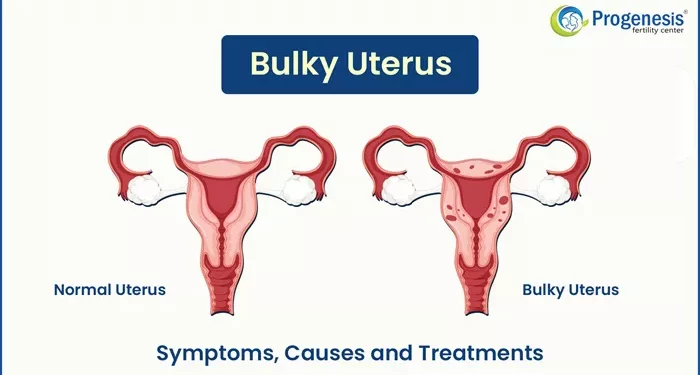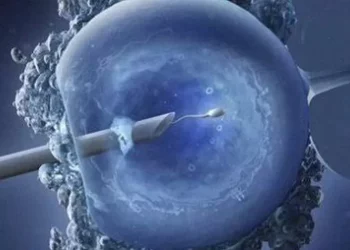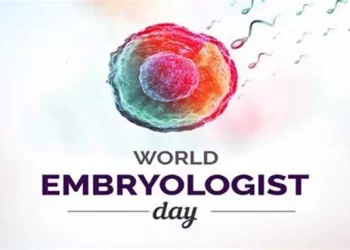The uterus, a central organ in the female reproductive system, plays a critical role in conception and pregnancy. Any structural or functional abnormality in the uterus can impact a woman’s ability to conceive and maintain a pregnancy. One such condition that has raised concerns is a bulky uterus. In this article, we will explore whether a bulky uterus can cause infertility, the underlying causes of a bulky uterus, and the treatment options available.
See Also: Can Baja Blast Cause Infertility?
Understanding the Uterus and Its Functions
The uterus, also known as the womb, is a pear-shaped organ located in the pelvis. It is the site where a fertilized egg implants and develops into a fetus. The main functions of the uterus include:
Menstrual Cycle Regulation: The uterus sheds its lining during menstruation if fertilization does not occur.
Fetal Development: The uterus provides a nourishing environment for the developing fetus.
Labor and Delivery: The muscular walls of the uterus contract to help expel the baby during childbirth.
Given these critical functions, any abnormalities in the uterus can potentially affect a woman’s reproductive health.
What is a Bulky Uterus?
A bulky uterus is a term used to describe a uterus that is larger than normal. This enlargement can be due to various conditions, including fibroids, adenomyosis, polyps, or other structural abnormalities. A bulky uterus is not a specific diagnosis but rather a descriptive term often identified during a pelvic exam or imaging studies like ultrasound.
Causes of a Bulky Uterus
Several conditions can lead to a bulky uterus. Understanding these conditions can help determine their impact on fertility.
Uterine Fibroids
Uterine fibroids are non-cancerous growths that develop from the muscle tissue of the uterus. They vary in size and can cause the uterus to enlarge. Fibroids are classified based on their location:
Intramural Fibroids: Located within the muscular wall of the uterus.
Submucosal Fibroids: Protrude into the uterine cavity.
Subserosal Fibroids: Extend to the outside of the uterus.
Impact on Fertility: The impact of fibroids on fertility depends on their size, number, and location. Submucosal fibroids, which distort the uterine cavity, are most
likely to cause infertility by interfering with the implantation of the embryo. Larger fibroids can obstruct the fallopian tubes or distort the shape of the uterus, making it difficult for a fertilized egg to implant.
Adenomyosis
Adenomyosis occurs when the endometrial tissue, which normally lines the inside of the uterus, grows into the muscular wall of the uterus. This condition causes the uterus to enlarge and can lead to heavy, painful periods.
Impact on Fertility: The relationship between adenomyosis and infertility is complex. Adenomyosis can affect the uterine environment, making it less conducive to embryo implantation. Additionally, it can disrupt the normal contractility of the uterus, which is essential for the transport of sperm and the embryo.
Endometrial Polyps
Endometrial polyps are benign growths attached to the inner wall of the uterus. They can vary in size and number and may protrude into the uterine cavity.
Impact on Fertility: Polyps can interfere with fertility by obstructing the uterine cavity, making it difficult for a fertilized egg to implant. They can also cause irregular menstrual bleeding, which may affect the timing of ovulation.
Uterine Congenital Anomalies
Congenital anomalies, such as a bicornuate or septate uterus, are structural abnormalities present from birth. These conditions can cause the uterus to appear bulky and may affect its function.
Impact on Fertility: Congenital anomalies can lead to recurrent miscarriages and preterm labor. They can also interfere with the implantation of the embryo and the development of the pregnancy.
Chronic Inflammation and Infection
Chronic pelvic inflammatory disease (PID) and other infections can lead to scarring and inflammation of the uterus, causing it to enlarge.
Impact on Fertility: Chronic inflammation can damage the uterine lining, making it difficult for a fertilized egg to implant. Scarring can also obstruct the fallopian tubes, preventing the sperm from reaching the egg.
Symptoms of a Bulky Uterus
The symptoms of a bulky uterus can vary depending on the underlying cause. Common symptoms include:
- Heavy or prolonged menstrual bleeding
- Pelvic pain or pressure
- Frequent urination or difficulty emptying the bladder
- Pain during intercourse
- Abdominal bloating
- Lower back pain
Diagnosis of a Bulky Uterus
Diagnosing a bulky uterus involves a combination of medical history, physical examination, and imaging studies. The following diagnostic tools are commonly used:
Pelvic Examination
During a pelvic exam, a healthcare provider can feel the size and shape of the uterus. If the uterus feels enlarged, further testing may be necessary.
Ultrasound
Ultrasound uses sound waves to create images of the uterus. It can help identify the presence of fibroids, polyps, adenomyosis, and other abnormalities. Both transabdominal and transvaginal ultrasounds may be used.
Magnetic Resonance Imaging (MRI)
MRI provides detailed images of the uterine tissues and is particularly useful in diagnosing adenomyosis and fibroids.
Hysteroscopy
Hysteroscopy involves inserting a thin, lighted tube through the cervix into the uterus. This allows direct visualization of the uterine cavity and can help diagnose polyps and submucosal fibroids.
Hysterosalpingography (HSG)
HSG is an X-ray procedure that involves injecting a contrast dye into the uterus and fallopian tubes. It helps assess the shape of the uterine cavity and the patency of the fallopian tubes.
Treatment Options for a Bulky Uterus
The treatment of a bulky uterus depends on the underlying cause, the severity of symptoms, and the woman’s fertility goals. Treatment options include medical management, surgical intervention, and assisted reproductive technologies (ART).
Medical Management
Medical management aims to reduce symptoms and manage the size of the uterus. Common medications include:
Hormonal Therapies: Birth control pills, progestins, and gonadotropin-releasing hormone (GnRH) agonists can help regulate menstrual cycles, reduce bleeding, and shrink fibroids.
Nonsteroidal Anti-Inflammatory Drugs (NSAIDs): These medications can help relieve pain associated with fibroids and adenomyosis.
Surgical Intervention
Surgical intervention may be necessary if medical management is ineffective or if the bulky uterus is causing significant symptoms or infertility.
Myomectomy: Surgical removal of fibroids while preserving the uterus. This is an option for women who wish to maintain their fertility.
Polypectomy: Removal of endometrial polyps, often performed during a hysteroscopy.
Endometrial Ablation: A procedure that destroys the lining of the uterus to reduce heavy bleeding. This is not recommended for women who wish to become pregnant.
Hysterectomy: Surgical removal of the uterus. This is a definitive treatment for adenomyosis, fibroids, and other conditions but results in infertility.
Assisted Reproductive Technologies (ART)
For women with a bulky uterus who have difficulty conceiving, ART may be an option. This includes:
In Vitro Fertilization (IVF): IVF involves retrieving eggs from the ovaries, fertilizing them with sperm in a lab, and transferring the resulting embryos into the uterus.
Intrauterine Insemination (IUI): Sperm is directly inserted into the uterus during ovulation.
Lifestyle and Alternative Treatments
In addition to medical and surgical treatments, certain lifestyle changes and alternative therapies may help manage symptoms and improve fertility.
Diet and Nutrition
Maintaining a healthy diet and managing weight can help regulate menstrual cycles and reduce the risk of developing fibroids and other uterine conditions.
Exercise
Regular exercise can help improve overall health, reduce stress, and maintain a healthy weight.
Acupuncture
Acupuncture has been suggested to help reduce pain and improve fertility in some women with uterine conditions.
Herbal Supplements
Some herbal supplements, such as vitex (chasteberry) and milk thistle, may help regulate hormones and reduce symptoms. However, it is important to consult with a healthcare provider before using any supplements.
Prognosis and Fertility Outcomes
The prognosis for women with a bulky uterus depends on the underlying cause and the effectiveness of treatment. With appropriate management, many women with a bulky uterus can achieve successful pregnancies.
Uterine Fibroids
Many women with fibroids can conceive naturally or with the help of fertility treatments. Myomectomy can improve fertility outcomes, especially if fibroids are distorting the uterine cavity.
Adenomyosis
While adenomyosis can pose challenges to fertility, treatments such as hormonal therapies and conservative surgery can improve the chances of conception. In severe cases, ART may be necessary.
Endometrial Polyps
Removal of polyps can significantly improve fertility outcomes, especially if they are obstructing the uterine cavity.
Congenital Anomalies
Surgical correction of congenital anomalies can improve fertility outcomes and reduce the risk of miscarriage and preterm labor.
Conclusion
A bulky uterus can be associated with several conditions that may impact fertility, including fibroids, adenomyosis, polyps, and congenital anomalies. While a bulky uterus can pose challenges to conception and pregnancy, various treatment options are available to manage symptoms and improve fertility outcomes. It is essential for women experiencing symptoms of a bulky uterus to seek medical evaluation and work closely with their healthcare provider to determine the best course of action for their reproductive health. With proper diagnosis and treatment, many women with a bulky uterus can achieve their dream of becoming mothers.
Related Links:



























